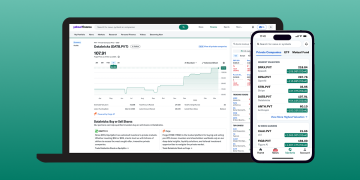Mexico’s Leading Economic Performance in Latin America
Regional Economic Leadership
As the fifth highest in GDP growth among the G20 nations, Mexico strides ahead in Latin America, with its economic progression being keenly observed by investors worldwide. In the second quarter of 2024, Mexico’s economy saw a modest resurgence with highlight-worthy performances across various sectors.
Investments and Exports: Signs of Recovery
Robust Investment and Rebounding Exports
On one hand, investment in Mexico has grown with a steady increase in foreign direct investment, serving as a continual propellant for economic growth. Q1 of 2024 saw foreign direct investment grow by 9.1% year-on-year to $20.31 billion, a record high, with 52.2% originating from the United States and predominantly flowing into manufacturing sectors like transport equipment, beverages and tobacco, and chemicals. As of the end of May 2024, multinational corporations announced 127 investment projects in Mexico, amounting to $39.16 billion. On the other hand, a rebound in exports to the United States led to an improved performance in Mexican exports, with April witnessing an 11.4% year-on-year increase in exports—substantially above the Q1 average growth rate of 1.7%. The recovery in exports to the US constituted the primary cause for this uplift, with a remarkable import value increase of 13.2% compared to an average of 3.9% in Q1, reaching a record monthly high of $43.65 billion. Enhanced imports of transport and electromechanical equipment in April resulted in a 15.4% rise in imports for Mexico, widening the trade deficit by 127.6% to $3.75 billion.
Domestic Challenges: Inflation and Unemployment
Inflation and Unemployment Weigh on Consumption
Rising costs, as reflected in an uptick in unemployment and inflation, led to a dampened growth in private consumption. April showed a slight increase of 0.3 percentage points in the unemployment rate, compounded by a 0.2 percentage point increase in CPI year-on-year, culminating in weakened consumer confidence—and a drop to the lowest level since November 2023 at 46.7.

Geopolitical Tensions and Fiscal Austerity
Policy and Global Influences on Growth
Looking ahead to the third quarter of 2024, geopolitical factors amongst others might diminish the vigor of Mexico’s economic growth. Firstly, the slowing pace of government spending constitutes one factor. The June 3rd election victory of the left-wing coalition candidate Ximena Sotomayor, set to become Mexico’s first female president starting in the fourth quarter of 2024, could imply a continuation of the “Fourth Transformation” ideology with an emphasis on strict fiscal austerity policies launched by current President López. April saw Mexico outline the “Economic Policy Criteria for 2025,” proposing expenditure cuts of 0.8 trillion Mexican pesos and reducing the fiscal deficit from 5% to 2.5% of GDP. Sotomayor has vowed to support infrastructural projects such as the Maya Train and the Angel Airport initiated under López’s administration. Nevertheless, given the financial deficit pressures, the current government is likely to face challenges in successfully completing infrastructure projects, resulting in a weaker contribution to economic growth in the third quarter. Moreover, investment uncertainty could increase due to potential softer policies on attracting foreign investment amidst fiscal pressures. Finally, the trade deficit could widen further. On the export front, with the US’s economic momentum slowing down and other export-oriented economies picking up, Mexico’s export growth to the US might decelerate. On the import side, trade restriction policies, including increased tariffs, are anticipated to elevate Mexico’s import costs. As Mexico’s second-largest source of imports, China is one of the countries most affected by the rise in most-favored-nation (MFN) tariffs. In the short term, higher prices might result in increased Mexican imports from China. In the medium to long term, Mexico’s role as a third country in China-US trade relations might be affected, potentially leading to a contraction in bilateral trade between China and Mexico, hence impacting Mexico’s net export performance. The GDP growth for the third quarter of 2024 is expected to be around 1.9%, with an anticipation of an annual growth of 2.1%.



























